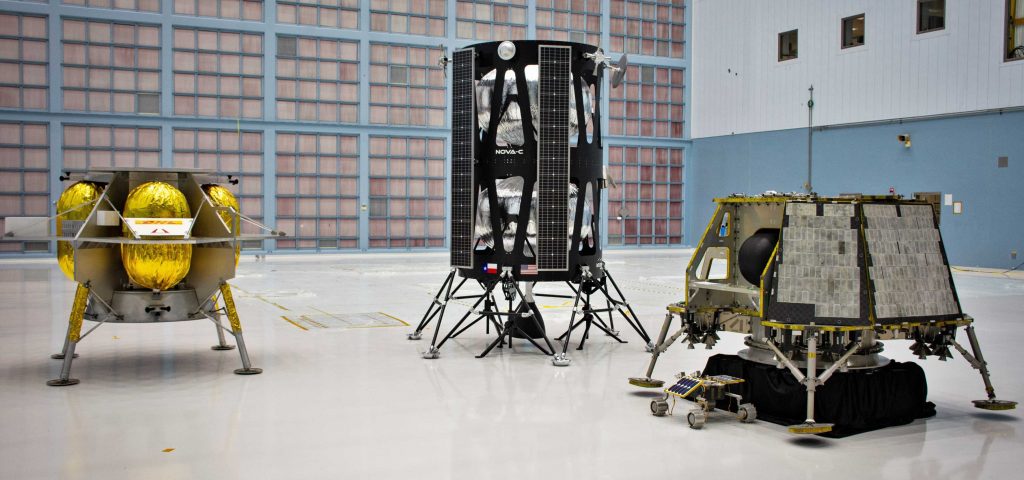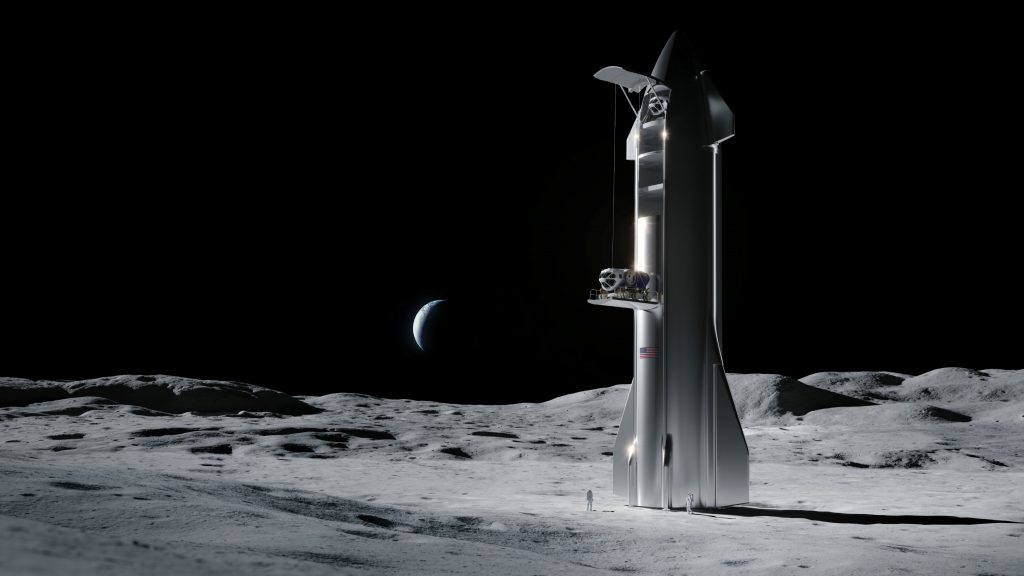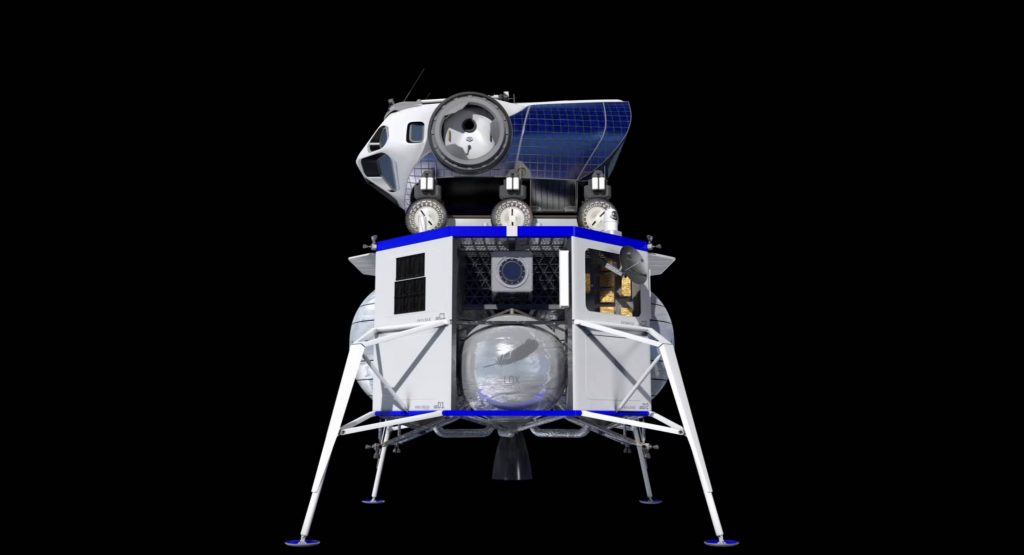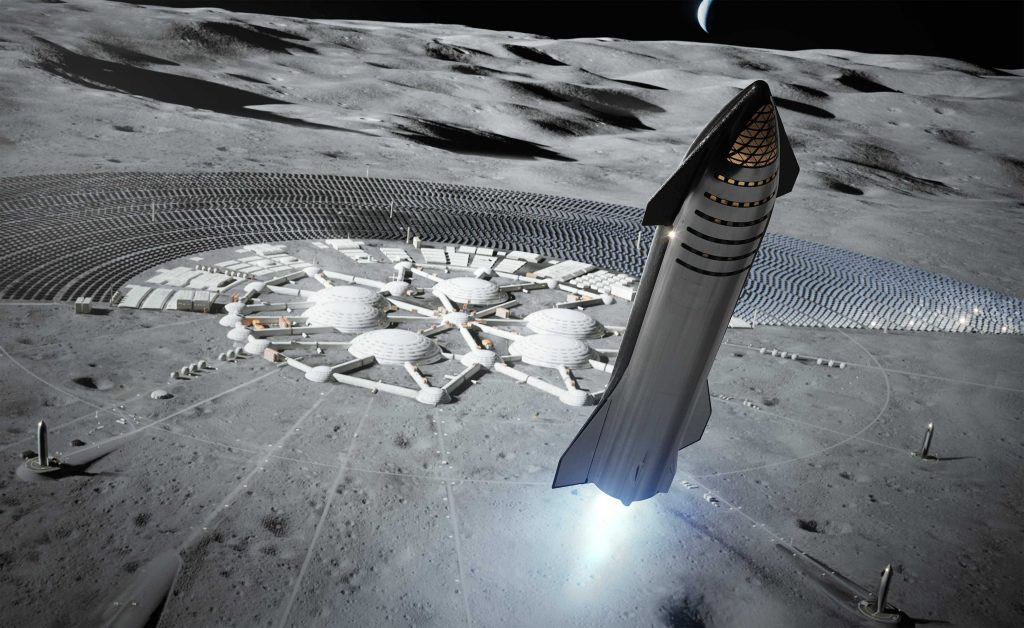On November 18th, NASA announced that it had added commercial Moon lander offerings from SpaceX, Blue Origin, Sierra Nevada Corporation, and others to a pool of companies that will be able to compete to affordably deliver cargo to the surface of the Moon. With this latest addition of landers, competition could get very interesting, very quickly.
In November 2018, NASA revealed a big step forward in its plans to kickstart robotic exploration and utilization of the Moon, announcing nine new partners in its Commercial Lunar Payload Services (CLPS) initiative. Designed first and foremost to encourage the commercial development of unprecedentedly affordable Moon landers, the program’s first nine partners included Lockheed Martin, Astrobotic, Intuitive Machines, Masten Space, Orbit Beyond, and several others.
In May 2019, NASA announced the next step, contracting with three of those nine aforementioned providers to bring their proposed Moon landers to fruition and attempt their first lunar landings. Orbit Beyond dropped out shortly after but Astrobotic and Intuitive Machines continue to work towards that goal and aim to attempt the first Moon landings with their respective Peregrine and Nova-C spacecraft no earlier than (NET) July 2021. Intuitive Machines has contracted a SpaceX Falcon 9 for its first Nova-C Moon launch, while Astrobotic side with the very first launch of United Launch Alliance’s (ULA) next-generation Vulcan rocket.

Generally speaking, the landers offered by the first nine CLPS partners were on the smaller side of the spectrum, capable of delivering around 50-100 kg (100-200 lb) of useful cargo to the surface of the Moon with launch masses around 1500-3000 kg (3300-6600 lb). On November 18th, NASA announced that a second group of partners would be added to the competitive ‘pool’ of CLPS-eligible Moon landers, all of which can technically compete to land a range of NASA payloads on the Moon. The new five are Ceres Robotics, Tyvak Nano-Satellite Systems, Sierra Nevada Corporation, Blue Origin, and SpaceX.
Next to nothing is known about Tyvak’s or Ceres Robotics’ apparently proposed landers, but a render of SNC’s Moon lander concept shares some obvious similarities with its Dream Chaser spacecraft and expendable power and propulsion module, implying that it’s likely on the larger side. Blue Origin and SpaceX, of course, proposed their Blue Moon and Starship spacecraft.


As a 100%-speculative guess, Ceres and Tyvak’s landers are likely in the same ~100 kg-class range as the nine CLPS providers selected before it, while Sierra Nevada’s lander concept is probably closer to 500 kg (1100 lb). According to Blue Origin, it’s recently-updated Blue Moon lander is designed to deliver up to 4500 kg (9900 lb) to the lunar surface and is expected to attempt its first Moon landing no earlier than 2024.
Unsurprisingly, SpaceX’s Starship blows all 13 other lander proposals out of the water and, in the context of the CLPS program, is a bit like bringing a Gatling gun to a paintball match. According to SpaceX, a fully-refueled Starship should be able to land 100 metric tons (220,000 lb) of cargo on the Moon, although it’s unclear if that would allow the Starship to return to Earth.

In simpler terms, there is just no chance whatsoever that the practical scope of NASA’s CLPS program could possibly warrant more than a few metric tons delivered to the surface of the Moon. NASA as a whole doesn’t have the budget needed to build useful several-dozen-ton spacecraft or experiments, let alone CLPS. In that sense, the real question to ask is what could Starship manage if the useful payloads it needs to deliver are no more than a few metric tons?
Assuming SpaceX’s technical know-how is mature enough to allow Starship to preserve cryogenic propellant for weeks or months after launch, it’s entirely conceivable that a Moon launch with, say, 10 tons of cargo could be achieved with just one or two in-orbit refuelings, all while leaving that Starship enough margin to safely return to Earth. Given that NASA awarded Intuitive Machines and Astrobotic approximately $80M apiece to land 50-100 kg on the Moon, it’s far too easy to imagine SpaceX quoting a similar price to deliver 10+ tons to the Moon by enabling full Starship reuse.
All things considered, politics still looms in the distance and there is just as much of a chance that SpaceX (and maybe even Blue Origin) will be passed over by CLPS when the time comes to award the next round of Moon delivery contracts. Still, the odds of something far out of the ordinary happening are much higher with a program like CLPS. Stay tuned!
Check out Teslarati’s newsletters for prompt updates, on-the-ground perspectives, and unique glimpses of SpaceX’s rocket launch and recovery processes.

(adsbygoogle = window.adsbygoogle || []).push({});
<!–
–>
var disqus_shortname = «teslarati»;
var disqus_title = «SpaceX’s Starship to spar with Blue Origin for NASA Moon landing contracts»;
var disqus_url = «https://www.teslarati.com/spacex-starship-blue-origin-nasa-moon-landing-contracts/»;
var disqus_identifier = «teslarati-120916»;

